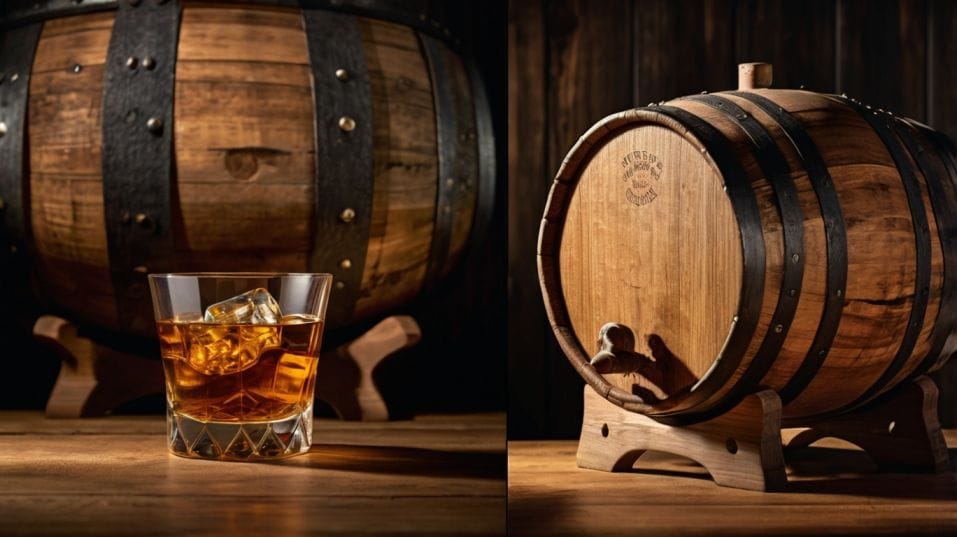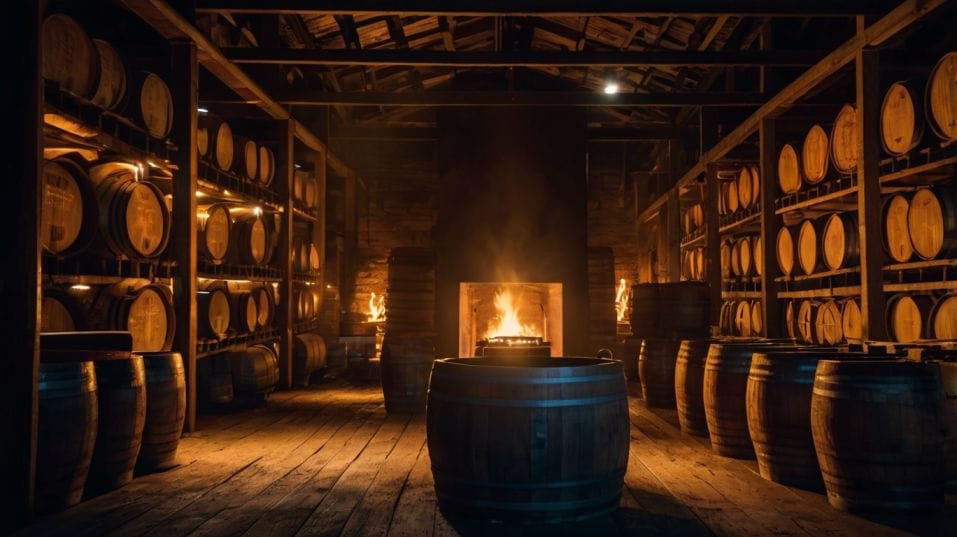How Toasting and Charring Impact Taste
Learn how toasting and charring barrels shape whiskey flavor. Decode labels, taste with intent, and shop smarter—no hype, just insight.

Ever wondered how fire changes whiskey before it even hits the barrel rack? If you're just starting your whiskey journey, understanding toasting and charring is your first real edge.
These aren’t just buzzwords—they’re the hidden levers that shape flavor, texture, and depth. Grasp what fire does inside a barrel, and you'll stop guessing at the shelf.
You'll taste smarter, collect with confidence, and know exactly why a pour hits the way it does.
Flame as Flavor Tool
Every whiskey barrel starts off raw: plain, pale oak staves assembled into a tight vessel. It’s what happens next that unlocks flavor.
Toasting and charring are two different ways to apply fire to the barrel’s interior. They’re not interchangeable, and they don’t do the same job.
Toasting involves applying a gentler heat over a longer period—often 15 to 45 minutes—allowing the fire to slowly break down lignin, hemicellulose, and cellulose in the wood.
This process draws out vanilla, caramel, roasted nuts, and spice. These compounds aren’t just surface-level—they’re baked in deep. Think of this as coaxing, not scorching.
Charring comes after, or instead. It’s short and intense—usually 15 to 60 seconds of direct flame, creating a blackened, alligator-skin texture inside the barrel.

Charring doesn’t just influence flavor. It creates a layer of charcoal that acts like a filter, stripping off unwanted harshness and chemically transforming the spirit as it ages. It opens up the wood and accelerates interaction between spirit and oak.
Different char levels (often numbered 1–4, with 4 being the most aggressive) produce different results. A heavier char brings deeper smoke, sharper spice, and darker color.
A lighter char gives you a more delicate influence—soft vanilla, dry tannins, light toast. Knowing the difference changes how you interpret what’s in your glass.
What Toasting Actually Adds
Toasting doesn't overwhelm the whiskey. It weaves in complexity. A well-toasted barrel gives you aromas and flavors that are warm, layered, and persistent. Here’s what starts showing up when you learn to taste it:
- Vanilla and almond from broken-down lignin
- Honey and light caramel from hemicellulose degradation
- Spice tones like clove or cinnamon from tannin breakdown
- Toasted bread, hazelnut, even espresso, depending on how deep the toast goes
These notes tend to live in the mid-palate and the finish. They don’t pop immediately—but they build. Toasted barrels give whiskey softness.
Not weakness—softness. They round off the edges, lengthen the finish, and add depth that rewards a second sip.
You’ll notice this most clearly in American whiskeys that use toasted barrel finishes—bourbons that spend extra time in a secondary cask that’s been toasted but not charred.
It’s dessert without being sugary. Rich without being cloying. The kind of complexity that turns a good bottle into a standout.
What Charring Really Does
Charring is blunt force. But it’s not just about smoke. A charred barrel doesn’t just flavor the whiskey—it transforms it chemically. Here’s what char brings to the table:
- Smoke and spice from pyrolysis of the wood surface
- Color extraction—the darker the char, the richer the amber
- Charcoal filtration, removing sulfur and softening harsh edges
- Greater surface area, allowing more rapid extraction of flavor compounds
Higher char levels can punch up a whiskey’s boldness. You’ll get cracked pepper, toasted oak, burnt sugar, and sometimes a dry, almost campfire-like finish.
These are the whiskeys that feel like they grip your tongue. They can be aggressive—but when balanced, they offer structure and power.
Char also affects mouthfeel. A high-char barrel may give you a thicker, oilier sensation. Lower char might lean dry and clean. It’s not just what you taste—it’s how the whiskey moves across your palate.
Why It Changes How You Buy
Once you understand toasting and charring, the whiskey aisle starts to look different. You don’t need gimmicks. You need information. You start asking questions like:
- Was this aged in a standard charred barrel or a toasted one?
- Is this a finish or a full maturation?
- What char level was used?
- How long did it sit in that barrel—and at what entry proof?
Most brands don’t hand you these answers on a silver label. But the ones that do? Pay attention. If a bottle mentions “toasted barrel finish” or “char #3 cask,” that’s your cue to start digging deeper.
This also helps when exploring single barrels or private picks. Two barrels from the same distillery, same mash bill, even the same warehouse floor, can taste radically different based on barrel prep alone.
If you’re collecting seriously, those subtle differences become the most exciting part of the hunt.
The Fire-Flavor Relationship in Practice
Some distilleries experiment with hybrid treatments—long toasts followed by light chars, or deep chars over lightly toasted wood. The combinations are endless, and each one gives you a different interaction between spirit and wood.
For example: a heavily toasted barrel with just a flash char? Expect deep cocoa, dense vanilla, a mellow texture. A light toast with a heavy char?
More spice, more burn, more wood tannin. These aren’t just tasting notes—they’re signals. Learn them, and you stop drinking passively. You start decoding every glass.
Even in Scotch and other non-charred-barrel traditions, understanding toast and char pays off. Sherry butts, wine casks, even rum barrels are toasted to different levels, and those decisions show up in the final pour.
Final Thoughts
Fire shapes whiskey. Toasting builds complexity. Charring delivers structure. Together, they create the core of flavor—long before age, mash bill, or proof enter the picture.
If you want to taste with clarity and collect with intention, stop ignoring the barrel. Train yourself to spot the influence of toast and char in every pour.
Build a vocabulary around it. Ask smarter questions. Be the kind of drinker who doesn’t need hype to know what’s worth buying.
So here’s your next move: Pour two whiskeys with different barrel treatments. Don’t read tasting notes. Just taste. Nose them hard. Let them sit. Feel the way each one finishes. You’ll know the fire when you taste it.




